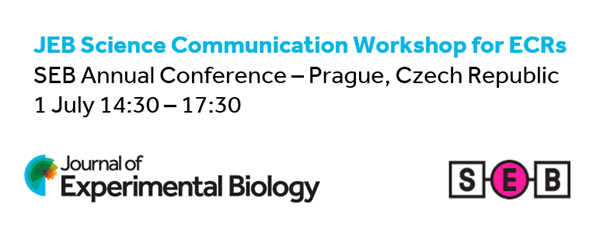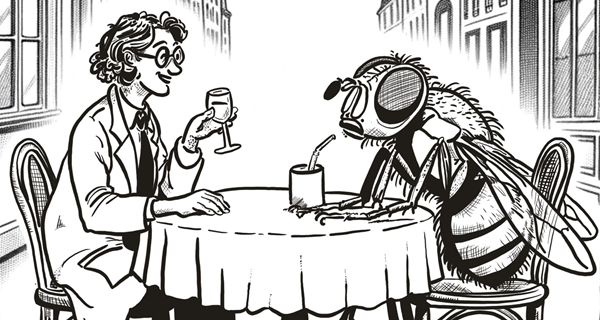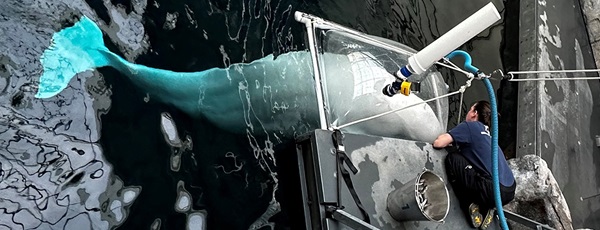ABSTRACT
Necturus maculosus kidney function has been examined using standard clearance techniques and renal tubular micropuncture methodology.
Throughout, cyanocobalamin (vitamin B12) has been used to monitor glomerular filtration rate (GFR) and tubular water movements. It was established that this substance was handled by the Necturus kidney in a similar manner to inulin. It can be readily analysed, together with renal electrolytes, by electron microprobe techniques.
Profiles of transtubular gradients (TF:P ratios) along the nephron were established for osmolarity, sodium, potassium, calcium and cobalt (of cyanocobalamin).
Ureteral urine is always hyposmotic with respect to plasma and the site of dilution of the plasma ultrafiltrate is within the distal segment.
Up to 30 % of the filtrate is isosmotically reabsorbed along the proximal tubule ; the tubular fluid : plasma ratio for osmolarity and sodium is around 1, and the TF : P for cobalt of cyanocobalamin is about 1·4 by the end of this segment.
The renal effects of the neurohypophysial hormone arginine vasotocin (AVT) and an aldosterone antagonist (SC14266; Soldactone) have been examined.
AVT was consistently antidiuretic causing both a decreased GFR and an enhanced distal tubular reabsorption of water.
SC14266 also increased distal tubular reabsorption of water. Such an effect differs from that found in higher vertebrates, and may indicate a ‘glucocorticoid-type’ of renal action for aldosterone in amphibians.
INTRODUCTION
In many respects the Amphibia span the conceptual evolutionary gap between aquatic and terrestrial vertebrates ; indeed the basic renal and neuroendocrine characteristics of contemporary forms may reflect certain phenomena associated with the evolution of amniote vertebrates. Foremost in the adaptive radiation of Amphibia has been the ability to modify the function of the kidney in the face of altered osmotic circumstances. Among the most salient of these features are the acquisition and exploitation of renal glomerular and tubular mechanisms to modify both the volume and composition of the urine (Sawyer, 1972). Associated with these adaptations are various neuroendocrine mechanisms, most notably the hormones of the neurohypophysis and the adrenocortical homologue (Maetz, 1968).
The urodele amphibian, Necturus maculosus, was one of the first vertebrates to be investigated with respect to renal tubular micropuncture techniques (see Richards, 1938). These early studies have been greatly extended, resulting in the establishment of some of the basic relationships within the nephron segments and many of the in vivo reabsorptive and secretory transport processes involved (Giebisch, 1956; Schatzman, Windhager & Solomon, 1958; Windhager et al. 1959; Oken & Solomon, 1960; Bott, 1962; Khuri et al. 1972; Giebisch, Sullivan & Whittembury, 1973; Khuri et al. 1974). Hormonal actions on water and electrolyte homeostasis, and their adaptative significance have, however, been largely neglected in this group (see Morel & Jard, 1968). In anuran species neurohypophysial peptides are antidiuretic; in most forms the antidiuresis comprises a reduction in glomerular filtration rate and an enhanced reabsorption of osmotically free water (Sawyer, 1957; Jard & Morel, 1963). The aquatic Urodela typically show less of a renal antidiuresis in response to neurohypophysial peptides than do their more terrestrial counterparts (Bentley & Heller, 1964). There have been few studies carried out on the effects of adrenocortical steroids upon amphibian renal function, and those that are available are somewhat equivocal in that natriuretic and antinatriuretic renal responses to aldosterone have been noted (Crabbé, 1961 ; Middler et al. 1969; Henderson et al. 1972).
The present studies extend the information on the basic features of water and electrolyte handling by the kidney of Necturus and define more clearly the sites and mechanisms of the arginine vasotocin-induced antidiuresis (Garland, Henderson & Chester Jones, 1973 a). In addition, an attempt has been made to understand the possible renal actions of aldosterone in this species by using an aldosterone antagonist.
MATERIALS AND METHODS
(1) Maintenance and preparation of animals
Mudpuppies, Necturus maculosus, of both sexes, weighing between 100 and 200 g, were obtained from Schettle Biologicals Ltd, Minnesota, U.S.A. Stock animals were held in vivaria containing tap water at 10 °C and fed small goldfish. Experimental animals were deprived of food for the week prior to study.
Animals were initially anaesthetized in 0·1% MS222 (Tricaine methanosulphonate, Sandoz Ltd) solution, and then placed supine on a micropuncture table with the head and gills resting in a beaker containing 0·01 % MS222 in aerated tap water. Through a ventral incision polythene cannulae were placed in the abdominal and hepatic portal veins (Clay Adams PE50 and PE10 Intramedic Catheters), serving respectively for infusions and for withdrawal of blood specimens. A catheter made from pulled-out PE10, was placed in one mesonephric duct (‘ureter’). The kidney to be used for micropuncture was covered with a layer of water-equilibrated paraffin oil, and any exposed viscera were kept moist with physiological saline. The surface of the animals was covered with tap water moistened tissues. Animals thus prepared maintained good renal circulations and urine flows for many hours.
In the antialdosterone experiments (see below), mudpuppies were anaesthetized with MS222 the day before use and a cannula was placed in the abdominal vein. The body wall was sutured and the animals allowed to recover over a period of at least 8 h in tanks of tap water at 4 °C before further manipulation.
(2) Kidney function
The kidney with the cannulated ureter was used to assess overall kidney function, and the contralateral kidney employed for micropuncture studies. Tubular fluid specimens were collected under oil by the methods originally described by Richards & Walker (1937). A total of 120 renal tubular fluid specimens was obtained from 30 animals. These samples were collected from all segments of the nephron both under control conditions and after injections of either arginine vasotocin or the aldosterone antagonist. Puncture sites were identified from camera lucida drawings of latex-injected tubules (Bott, 1952) and are designated 0–100% proximal and 0–100% distal in ‘Results’.
For reasons discussed below, inulin, the usual marker for glomerular filtration and transtubular water movements, was not used. Instead, vitamin B12 (Cyanocobalamin) was employed, and experiments were carried out to verify similarity of behaviour between the two markers within the kidney.
(3) Analytical procedure
For larger samples of urine and plasma, osmolarities were determined on a Fiske Osmometer, sodium and potassium concentrations by flame emission spectrometry and the calcium concentrations by atomic absorption spectrometry (Pye Unicam, SP90).
Osmolarities of renal tubular fluid and corresponding plasma samples were assessed by microcryoscopy (Clifton Nanoliter Osmometer, New York). The sodium, potassium, calcium and cobalt were analysed by electron microprobe techniques (Cambridge Microscan 5) using 0·5 nl samples as described previously (Garland et al. 1973b).
For the analysis of calcium it is important to know the proportion of the plasma calcium that is ultrafiltrable when calculating the tubular fluid : plasma ratios for this electrolyte. Plasma samples were obtained from five experimental animals and saturated with a mixture of 5 % CO2:95 % O2. Ultrafiltrates were then prepared by centrifugation through a dialysis membrane (8/32 Visking Tubing) at around 700 g for 45 min in an atmosphere of 5 % CO2:95 % O2 (Toribara, Terepka & Dewey, 1957). The calcium contents of the plasma and its ultrafiltrate were then determined by atomic absorption techniques.
In experiments comparing the renal clearance of 57Co-cyanocobalamin and 14C-carbon-inulin, the 57Co gamma radiation was assayed directly on 100 μl plasma and urinary specimens (Packard auto gamma spectrometer). Plasma and urinary carbon-14 were determined on 20 μl aliquots added to an ethoxyethanol scintillation fluid mix (White, 1968) (Packard Tri-carb spectrometer Model 3375).
(4) Experimental protocols
(a) Measurement of glomerular filtration rate (GFR)
In order that cyanocobalamin could be used in subsequent experiments for measurement of GFR and transtubular water movement, it was necessary to compare its renal clearance with that of inulin, a known indicator of these parameters in Necturus (Bott, 1952, 1962; Giebisch, 1956). Mudpuppies were anaesthetized in the usual manner and an intravenous infusion of 0-65 % sodium chloride solution begun at a rate of 0·03 ml/min.
A priming intravenous injection of 1 ml isotonic saline containing 2 ·Ci 14C-carboxy-inulin (Radiochemical Centre, Amersham; specific activity 2·1 μCi/mg), 2·2 μCi 57Co-cyanocobalamin (Radiochemical Centre, Amersham; specific activity 1·0μCi/μg) and 10 mg unlabelled cyanocobalamin (Sigma, London) was then given. This was followed by a sustaining saline infusion containing 0·2 μCi/ml 14C-inulin and 0·11 μCi/ ml 57Co-cyanocobalamin at a rate of 0·03 ml/min. After a 45 min equilibration period renal clearance measurements were begun. Urine was collected into tared vessels over 30 min clearance periods and midpoint blood specimens were withdrawn from the hepatic portal vein. The blood was immediately centrifuged and the plasma drawn off and stored at −20 °C until analysed.
Having established a correlation between inulin and cyanocobalamin clearances, the latter, in its unlabelled state, was used in all subsequent experiments. The central cobalt atom of this molecule was analysed using electron microprobe techniques.
(b) Effects of arginine vasotocin
After the usual surgical and other preparative procedures, animals were given a priming intravenous injection of 50 mg cyanocobalamin in 1·0 ml isotonic saline, immediately followed by a sustaining infusion of 25 mg/min cyanocobalamin in 0·03 ml. This produced stable plasma cyanocobalamin levels and urine production rates after about 45 min, and urine was then collected from the catheterized ureter. Renal clearance periods were of either 30 or 60 min, depending on urine flow, and in all cases, mid-point blood samples were obtained. Three to four control clearances were allowed before hormone administration, and micropuncture samples were withdrawn from both proximal and distal nephron segments during this period. Care was taken to note the exact site of micropuncture, since tubular recollections from the same puncture site were made after hormone administration. Arginine vasotocin (8-arginine oxytocin, Sandoz) at a dose of 20 ng/kg body weight was injected in a volume of 40 μl into the abdominal vein.
(c) Effects of aldosterone antagonist. Soldactone
(Potassium canrenoate, G. D. Searle Ltd, Chicago, U.S.A.; SC14266) was dissolved in isotonic saline immediately before use. A total dose of 100 mg/kg body weight was injected intravenously in two equal doses, at 18 h and 2 h before micropuncture. The procedures for infusions, urine collection, blood collection and renal tubular micropuncture were the same as those described above.
RESULTS
(1) Measurement of glomerular filtration rate
The simultaneously measured renal clearance rates of inulin and cyanocobalamin were found to be related by the equation:
clearance of total plasma cyanocobalamin = (0·91 ± 0·02) × inulin clearance.
This is indicated by a hatched regression line in Fig. 1. In all experiments in which cyanocobalamin clearance was used as an index of glomerular activity, the values were adjusted by a factor of 0·91 to obtain the equivalent inulin clearance.
Relationship between the simultaneously measured renal clearance rates of 14C-inulin (abscissa) and 57Co-vitamin B12 (ordinate) in Necturui maculona.
(2) Normal renal function
Table 1 (a) summarizes the control renal functional values and blood plasma composition of anaesthetized Necturus. As in the vast majority of amphibia, the kidney of this animal prepares a highly dilute urine with respect to the plasma concentration. Only a small proportion of the filtered volume is reabsorbed, while up to 85 % of the filtered solute is retained, and the fractional sodium excretion approximates 5 %.
Examination of the micropuncture data (Figs. 2–6; Table 2) reveals the sites of origin of some of these urinary characters. Thus the ratio of the concentration of cobalt (in cyanocobalamin) in the tubular fluid to that in plasma (TF : P ratio) gives an indication of the major sites of filtered water reabsorption (Fig. 2). A ratio of about 1·4 is attained by the end of the proximal tubule, indicating that up to 30% of the filtered water has been reabsorbed by this stage. Reabsorption is essentially isosmotic, since the TF:P osmolarity ratio remains close to unity throughout this segmen (Fig. 3). Distally, there is a progressive decrease in fluid concentration producing the characteristic hyposmotic amphibian urine.
The ratio of the concentration of cobalt (in vitamin B12) in tubular fluid (TF) to that in the plasma at different sites along the nephron and in the ureter of Necturus maculosus. Each point represents a micropuncture site which was identified from a camera lucida drawing of the latex injected tubule. Proximal and distal segments were identified and the puncture sites designated 0–100% proximal (Bowman’s capsule -intermediate segment) and 0–100% distal (intermediate segment -collecting duct). (•) indicate control values and (○) represent values after injection of arginine vasotocin ; the latter are joined to their appropriate pre-injection control points by a vertical line. (◊) are values seen after SC 14266 (Soldactone) treatment.
The ratio of the concentration of cobalt (in vitamin B12) in tubular fluid (TF) to that in the plasma at different sites along the nephron and in the ureter of Necturus maculosus. Each point represents a micropuncture site which was identified from a camera lucida drawing of the latex injected tubule. Proximal and distal segments were identified and the puncture sites designated 0–100% proximal (Bowman’s capsule -intermediate segment) and 0–100% distal (intermediate segment -collecting duct). (•) indicate control values and (○) represent values after injection of arginine vasotocin ; the latter are joined to their appropriate pre-injection control points by a vertical line. (◊) are values seen after SC 14266 (Soldactone) treatment.
Tubular fluid (TF) to plasma osmolarity ratio along the nephron and in the ureter of Necturus maculosus. Symbols and abbreviations are as in Fig. 2.
Sodium is the major osmolyte within the filtrate, and its TF:P ratio profile along the nephron (Fig. 4) is very similar to the osmolar TF:P. For sodium a ratio of 1·0 prevails within the proximal tubule, but this rapidly falls, to reach values of 0·2 by the end of the distal segment. Interestingly, such changes also apply to calcium (Fig. 5) but since this electrolyte is only present in relatively low concentrations its contribution to total osmolarity is slight.
Tubular fluid (TF) to plasma sodium concentration ratio along the nephron and in the ureter of Necturus maculosus. Symbols and abbreviations are as in Fig. 2.
Profile along the Necturus nephron of the change in ratio between renal tubular fluid calcium concentration to ultrafiltrable calcium concentration in plasma as related to the simultaneously measured Cobalt (of vitamin B12) tubular fluid to plasma ratio, Symbols and abbreviations are as in Fig. 2.
Profile along the Necturus nephron of the change in ratio between renal tubular fluid calcium concentration to ultrafiltrable calcium concentration in plasma as related to the simultaneously measured Cobalt (of vitamin B12) tubular fluid to plasma ratio, Symbols and abbreviations are as in Fig. 2.
Potassium, however (Fig. 6), appears to be actively secreted proximally, since TF:P ratios for this ion are consistently higher than corresponding TF:P cobalt ratios throughout this segment. Distally, two handling mechanisms are suggested. The mean TF:P value in the first 50% of this segment is 1·70 ±0·21 (n = 12) and 0·99 ±0·25 (n = 11) in the second half. Final (ureteral) urine is normally hypotonic to plasma for potassium.
Tubular fluid to plasma potassium concentration ratio along the nephron and in theureter of Necturus maculosus. Symbols and abbreviations are as in Fig. 2.
(3) Effects of arginine vasotocin (AVT)
Within 2–3 min of a single intravenous injection of AVT, many glomeruli could be seen to have reduced blood flows as judged by the rate of passage of red cells through the capillary network. Indeed, in many cases, there was a total shut down of flow, with blood being redirected away from the Malpighian corpuscle. This acute phase of the vascular response lasted for 7–10 min, and was accompanied by reduced tubular fluid flow in both proximal and distal segments ; oil blocks introduced before injection of AVT showed rapid movement, but this ceased under the hormone’s influence. It was not possible to recollect from nephrons by free flow micropuncture until tubular flow had been re-established -some 20–30 min after injection of the peptide.
Fig. 7 illustrates a typical renal response to a single intravenous injection of AVT, and Table 1,(b) gives details of the group response. Rates of urine flow, glomerular filtration and free water clearance were all reduced for a period of at least 30 min to give the characteristic antidiuresis. Urine osmolarity was increased after AVT so that there is a reduced fractional excretion of osmotically free water ( . The general effects of AVT on the actual and fractional excretions of individual solutes were inconsistent, and a readily apparent action of the hormone on sodium, potassium and calcium was not decipherable (Table 1 (b)).
. The general effects of AVT on the actual and fractional excretions of individual solutes were inconsistent, and a readily apparent action of the hormone on sodium, potassium and calcium was not decipherable (Table 1 (b)).
Typical changes in renal function of Nedurus maculosus after a single intravenous injection of 20 ng arginine vasotocin/kg body weight. UV, urine flow (μl/min/kg); GFR, glomerular filtration rate ((μ/min/kg); CH,O clearance of osmotically free water (μl/min/kg); CH,O:GFR, relative free water clearance (fractional free water excretion).
Typical changes in renal function of Nedurus maculosus after a single intravenous injection of 20 ng arginine vasotocin/kg body weight. UV, urine flow (μl/min/kg); GFR, glomerular filtration rate ((μ/min/kg); CH,O clearance of osmotically free water (μl/min/kg); CH,O:GFR, relative free water clearance (fractional free water excretion).
Changes in ureteral urine following AVT injection were examined in greater detail in the contralateral kidney by micropuncture techniques. In Figs. 2–6 examples of the actions of AVT are shown with respect to particular regions of the renal tubule. In all cases, the closed circles show the control values, and open circles represent values obtained after AVT. Points joined by vertical lines indicate recollections from the same puncture site. AVT appeared to have little effect on the TF:P ratios of sodium, potassium, calcium, cobalt and osmolarity along the proximal convoluted tubule. In the distal segment, however, there was an average 26 % increase in the TF : Pcobalt and TF:Posmlarity ratios. These changes are indicative of an increased reabsorption of osmotically free water; in other words the permeability of the distal tubule to water has been increased by AVT allowing the osmolar TF:P ratio to approach unity. Sodium, potassium and calcium TF:P ratios all increased distally following AVT injection (Figs. 4–6). In the case of calcium, however, the change could not be accounted for simply by changes in water movement, since distal ratios remain elevated when referred back to the corresponding cobalt values (Fig. 5), suggesting an actual reduction in calcium reabsorption following AVT.
(4) Effects of SC 14266 (Soldactone)
Treatment with Soldactone failed to alter significantly plasma osmolarity or sodium levels when compared to control data (Table 1(c)). The most noticeable effects of the drug were a 66 and a 65 % reduction in the rates of urine production and free water clearance respectively. The glomerular filtration rate was unchanged, so that there was an enhanced tubular reabsorption of osmotically free water. Urinary osmolarity and sodium concentrations were increased above normal levels, but their relative clearances (CosmGFR; CNa:GFR) and that of water ( decreased. In contrast, the relative potassium clearance increased.
decreased. In contrast, the relative potassium clearance increased.
The micropuncture data (Figs. 3, 4) indicate that Soldactone has no significant effect on the proximal TF:P ratios of osmolarity or sodium. The ratio for cobalt, however (Fig. 2), appears to be slightly elevated. In the distal tubule, TF : P ratios of osmolarity and sodium were increased with a 22 % elevation in mean TF:P cobalt. The TF:PNa/TF:P∞ratios remain unchanged, indicating that the drug appears predominantly to affect water reabsorption.
DISCUSSION
The mudpuppy, Necturus maculosus, has been widely used in renal micropuncture investigations. The present studies have been specifically concerned with renal adaptations of this aquatic urodele, and the data obtained add several new facts to our knowledge of how the vertebrate kidney functions under different environmental conditions.
Glomerular activity and transtubular water movements have been assessed using cyanocobalamin (vitamin B12). This substance was chosen because its molecule contains a central cobalt atom which is readily detectable by electron microprobe techniques (Garland et al. 1973b). Inulin, the usual glomerular marker, possesses no such convenient element, and the introduction of radioactively labelled inulin into the microprobe could potentially damage the delicate detector systems. In Necturus, inulin and cyanocobalamin renal clearances were identical. Thus Necturus is similar to man and the dog (Nelp, Wagner & Reba, 1964; Ekins et al. 1966) in that vitamin B12 is excreted solely by the glomerulus, and its clearance gives an index of glomerular filtration rate, providing adequate plasma concentrations are maintained. The central cobalt atom was assayed by electron probe microanalysis and this allowed the same specimen of renal tubular fluid to be used for determining sodium, potassium, calcium and cyanocobalamin (Garland et al. 1973b). One specimen therefore provided all the information about transtubular water and electrolyte gradients within a renal tubular segment. Large amounts of cyanocobalamin were administered, as it is known that plasma binding of the vitamin can artificially alter the observed renal clearance.
The pattern of tubular concentration of cobalt indicated isosmotic water reabsorption in the proximal tubule with around 30 % of the filtrate being reabsorbed here. This value agrees with previous studies using inulin (Bott, 1952, 1962; Giebisch, 1956). Depending on the experimental condition the distal tubule was variably permeable to water, and it seemed that this segment is the major site for regulating the output of osmotically free water, and hence the osmolarity of the urine delivered to the urinary bladder.
The overall rates of urine flow and glomerular filtration (cyanocobalamin clearance) seen in the present studies are within the lower ranges quoted for a variety of amphibians (Deyrup, 1964). These values could reflect reduced rates of water influx across the gills (Maetz, 1963) or could have resulted from surgical trauma and/or anaesthesia-induced changes in renal function.
Control micropuncture data on sodium gradients along the nephron require little further comment as they confirm almost exactly the data of Bott (1962) and Khuri et al. (1963). The observed pattern of proximal tubular potassium handling agrees more with the reports of Oken & Solomon (1963), Khuri et al. (1963) and Watson, Clapp & Berliner (1964) than with that of Bott (1962). TF : PK ratios often exceed those of cobalt, which is indicative of a net transfer of potassium into the tubular fluid. In the distal segment there is a very wide scatter in potassium ratios, but there are indications of a secretory process in early distal regions (TF : P increasing) followed by a reabsorptive mechanism later on in the tubule (TF : P returning towards unity and below). Such findings are in line with the suggestions of Giebisch, Boulpaep & Whittembury (1971).
The calcium data are of particular interest, as no previous observations have been made upon the tubular handling of this ion in Amphibia. Dialysis experiments indicate that in Necturus plasma some 70 % of the total calcium is ultrafiltrable, a value very similar to the ionized fraction seen in other vertebrate groups (Simmons, 1971). Proximal TF:P ratios for calcium are generally in excess of 1·0 but when water movement is taken into account (TF : PCobalt) values become close to unity (calciumTF:P/ cyanocobalaminTF:P = 1·04 ± 0·04 for six observations in the proximal segment). Distally there is a progressive reabsorption of calcium so that the final excreted urine contains only 0·36 mM.
Arginine vasotocin has been identified in the neurohypophysis of Necturus (Follett & Heller, 1964); injections of the hormone in this study may therefore be regarded as use of an endogenous hormone. The amounts stored in the Necturus pituitary are less than in more terrestrial species (Follett & Heller, 1964; Bentley, 1969a), and attempts to demonstrate the presence of hydro-osmotic activity (presumptive vasotocin) in the circulation have been unsuccessful (Bentley, 1969b). This suggests that the mechanism for release of neurohypophysial peptides may be undeveloped in the more aquatic amphibians (Bentley, 1974). An antidiuretic action of such peptides can be elicited, although a physiological function for such effects is speculative. However, the vasotocin concentration achieved by the injections in the present studies is of the order of 1 × 10−10 M (assuming the peptide to be distributed throughout the extracellular fluid volume)-a value that has been observed in Anura (Bentley, 1969b). The typical renal antidiuresis of amphibians in response to arginine vasotocin may be resolved into a reduction in glomerular filtration rate and an increased reabsorption of osmotically free water (Sawyer, 1957). In certain species, for example, Xenopus, the tubular component may be slight or inconsistent (Henderson et al. 1972), whilst in others it appears that the glomerular portion is the less sensitive of the two (Sawyer, 1957). Necturus appears to possess both sets of receptors. The GFR was reduced overall, and this was reflected by a decreased blood flow through the glomerular capillaries. The observed redirectioning of blood away from many glomeruli after injection of AVT supports the idea that glomerular shutdown is effected by a constriction of the afferent glomerular arteriole (Sawyer, 1951). The accompanying reduction in tubular flow rates suggests that there is a graded reduction in glomerular filtration in individual nephrons, but until further information is available about individual nephron filtration rates and tubular maximum transport capacities, the differential actions of AVT on glomerular populations cannot be dismissed. In the quail, Braun & Dantzler (1974) observed that AVT rerouted blood to various glomerular types such that the antidiuresis resulted from the production of a urine from selected glomerular populations. Furthermore AVT may produce opposite, dose dependent effects in the eel (Henderson & Wales, 1974), resulting from changes induced in the numbers of functional nephrons. The intermittency of glomerular function in Amphibia is well known (Forster, 1942), and stimuli such as dehydration certainly effect an antidiuretic response by changing both numbers of functional units as well as possibly by reducing individual nephron filtration rates (Schmidt-Nielsen & Forster, 1954). Whether such responses emanate from the actions of AVT awaits elucidation.
The action of arginine vasotocin on the water permeability of the distal tubule adequately explains changes in relative free water clearance described here for Necturus and also elsewhere for other species (Sawyer, 1957; Jard & Morel, 1963 ; Jard, 1966). In the absence of AVT, the amphibian tubular epithelium must be virtually impermeable to water, since the excretion of osmotically-free water may amount to over 60% of that filtered ( , Fig. 7). Neurohypophysial peptides act at the level of this segment to enhance the permeability and consequently facilitate the reabsorption of osmotically-free water.
, Fig. 7). Neurohypophysial peptides act at the level of this segment to enhance the permeability and consequently facilitate the reabsorption of osmotically-free water.
The effects of the anti-aldosterone compound, SC14266, may reveal the actions of aldosterone on the renal handling of water and electrolytes. The most noticeable effect in the present study, evident from both gross clearances and micropuncture data, was an increased reabsorption of free water by the distal nephron. Whilst previous studies have shown that aldosterone promotes sodium transport across the amphibian skin and urinary bladder (Maetz, Jard & Morel, 1958; Bishop, Mumbach & Scheer, 1961; Crabbé, 1961, 1963; Bentley, 1971), there has been little or no direct evidence to indicate that it enhances sodium conservation by the kidney. The present study largely confirms this.
The natriuretic, diuretic and antikaliuretic effects of SC14266 seen in man (Hoff-meister, 1968) were not apparent in Necturus. However, aldosterone has potent ‘glucocorticoid’ actions in amphibians (Bergerhoff & Hanke, 1967 ; Hanke & Neumann, 1972), and high titres of this steroid occur in the blood (Sandor, 1972). The effects of glucocorticoids on rat distal tubular water permeabilities are such that free water excretion is sustained (Weiderholt & Weiderholt, 1968). Such an action for aldosterone on the amphibian kidney cannot be ignored. In addition to any direct effect on the distal tubule, there may also be extra-renal actions, with an accompanying (compensatory) renal response (Maetz et al. 1958; Maetz, 1963; Henderson et al. 1972).
ACKNOWLEDGEMENT
The work reported here is part of a research programme on renal function supported by a Science Research Council Grant to Professor I. Chester Jones. H.O.G. and J.A.B. were supported by Science Research Council Research Studentships. We are grateful to Dr B. T. Pickering, University of Bristol, for the arginine vasotocin and to G. D. Searle and Co. for the SC14266. Finally we thank Dr C. W. Haworth and Mr T. C. Hopkins, Department of Metallurgy, University of Sheffield, for the extensive and expert advice and assistance they gave in the use of the Electron Microprobe.

















